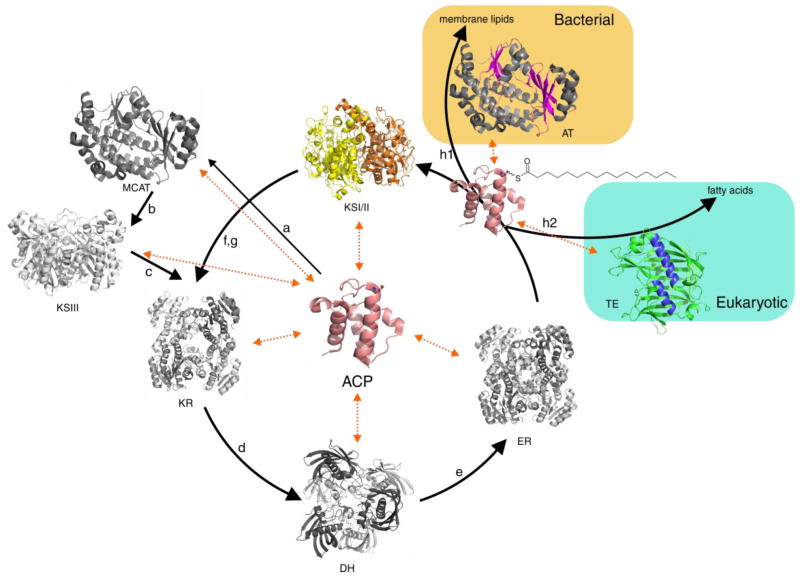Figure 1.
Type II fatty acid biosynthesis in bacteria and eukaryotes: (a) Fatty acid biosynthesis is initiated by the formation of malonyl-ACP from malonyl-CoA and holo-ACP by malonyl-CoA acyltransferase (MCAT, FabD). (b) β-ketoacyl ACP synthase III (KSIII, FabH) is responsible for the initial condensation of malonyl-ACP with acetyl-CoA. (c) 3-oxoacyl ACP ketoreductase (KR, FabG) reduces the keto group and (d) 3-hydroxyacyl ACP dehydratase (DH, FabA/FabZ) eliminates water. (e) enoyl ACP reductase (ER, FabI) reduces the double bond using NADH. Iterative activity of KS, KR, DH and ER domains extends the chain by two carbons each cycle. β-ketoacyl ACP synthase I (KSI, FabB) extends the chain from C4 to C16 and β-ketoacyl ACP synthase II (KS2, FabF) forms C18 from C16 (f and g). In the bacterial termination pathway, fatty acids are transferred from acyl-ACP to glycerol-3-phosphate for phospholipid formation using an acyl transferase (AT) (h1), and in the eukaryotic pathway, mature fatty acids are hydrolyzed from acyl-ACP by an acyl-ACP thioesterase (TE) (h2).

